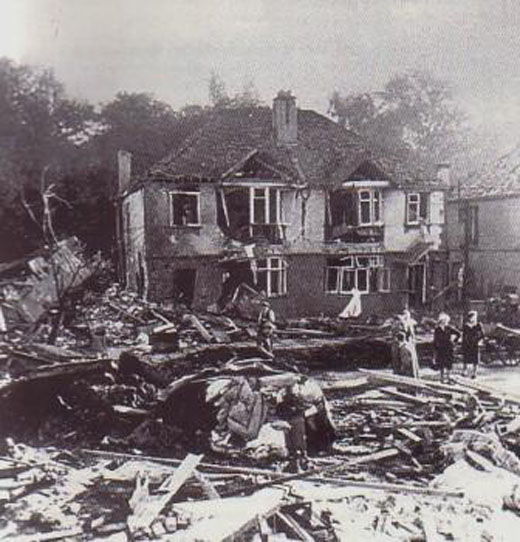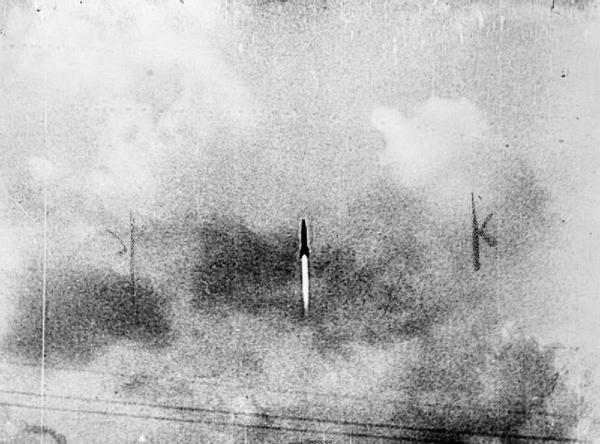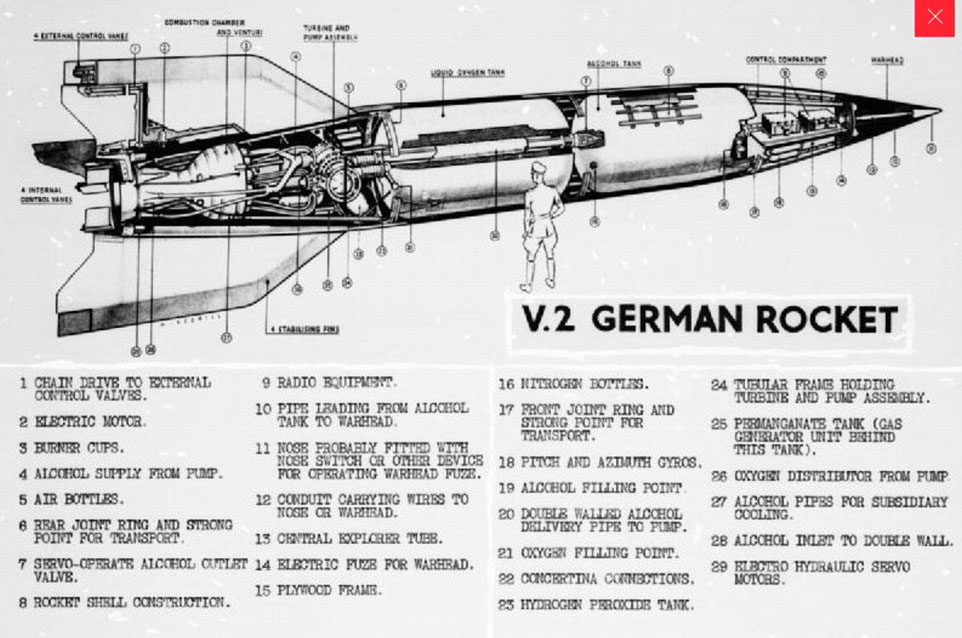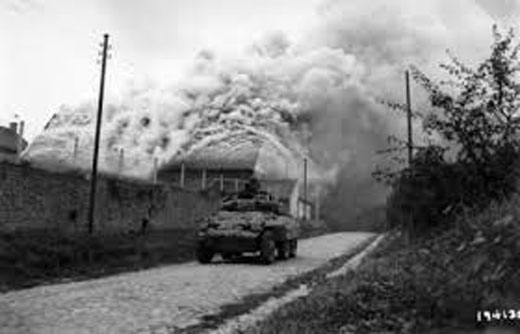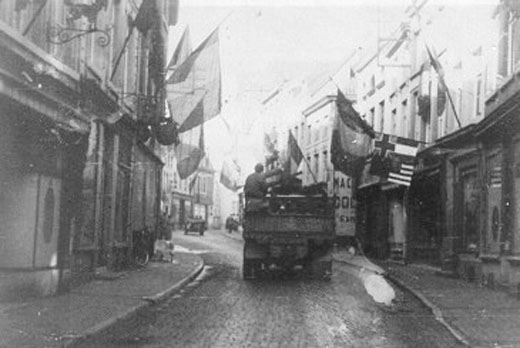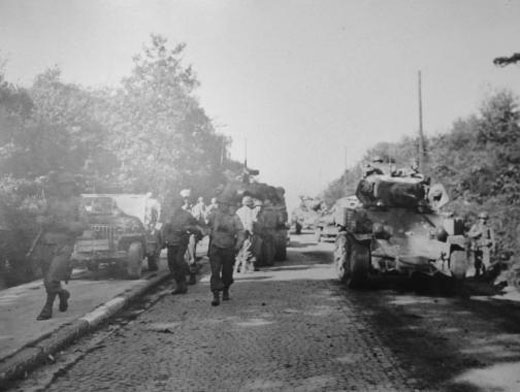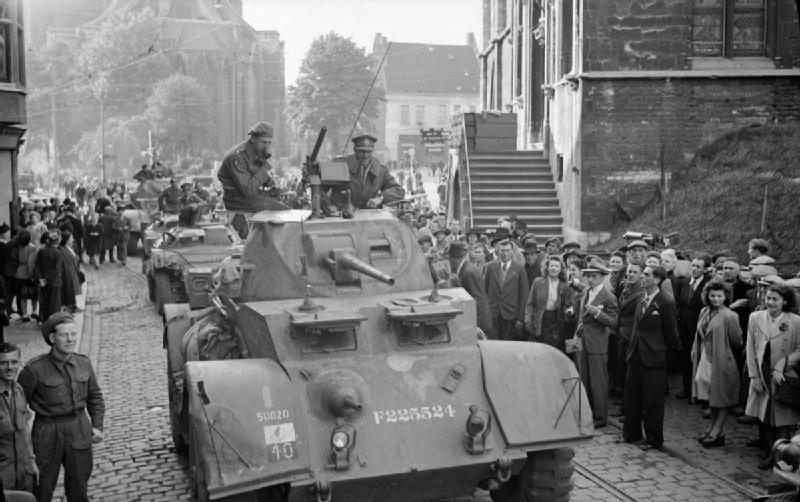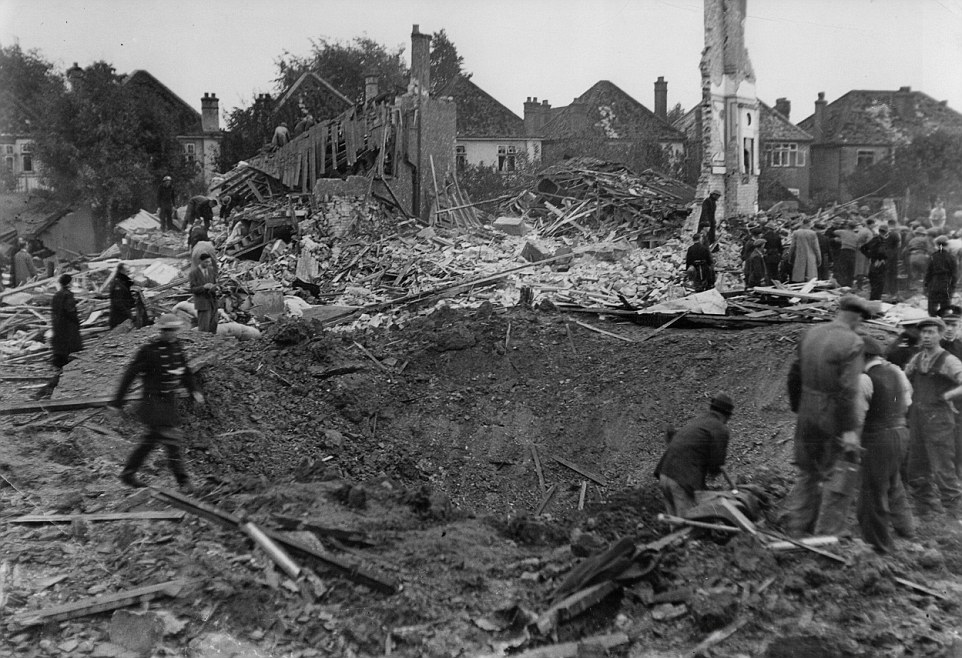Air Operations, Bonin and Volcano Islands
30th Heavy Bomb Group B-24s based on Saipan attack Iwo Jima and shipping off Chichi Jima.
[Air Operations, Carolines
- USN carrier aircraft from Task Group 38.1 and Task Group 38.4, plus surface warships from Task Group 38.1, Task Group 38.2, and Task Group 38.3 continue to bombard targets in the Palau Islands.
- During the night, 868th Heavy Bomb Squadron SB-24s attack airfields and Japanese defenses in the Palau Islands.
Air Operations, CBI
BURMA- 9 10th Air Force B-25s attack Katha.
- 3 308th Heavy Bomb Group B-24s attack a Japanese destroyer near Hong Kong.
- 5 341st Medium Bomb Group B-25s attack Hengyang and Lingling and two bridges near Hengyang and Kiyang.
- More than 100 14th Air Force P-51s and P-40s attack numerous targets across a large area of southeastern and east-central China.
- A 449th Fighter Squadron P-38 downs 2 Ki-43 'Oscar' fighters in an engagement over Paoshan at 1505 hours.
- 23 7th Heavy Bomb Group B-24s transport fuel from India to Kunming.
- 90 of 108 58th Very Heavy Bomb Wing B-29s staging through Chengtu attack a steel plant at Anshan.
- 3 B-29s attack targets of opportunity at Anshan.
- 5 B-29s attack rail facilities at Sinsiang.
- 3 B-29s attack unspecified targets of opportunity.
- 3 B-29s are destroyed in forced landings.
- During the night, Japanese bombers attack a headquarters, parked planes, and stores at the Hsinching airfield at Chengtu. 1 B-29 and 1 C-46 are damaged and 2 US soldiers are injured.
- 18 308th Heavy Bomb Group B-24s attack five rail bridges in northern and central French Indochina.
Air Operations, East Indies
- FEAF B-24s attack Lolobata.
- 380th Heavy Bomb Group B-24s attack airfields in the Kai Islands.
- 45 V Bomber Command B-24s attack Langoan and the airfield there on Celebes.
- B-25s attack Galela and Tobelo Island.
- B-25s attack small vessels around Ceram.
- V Fighter Command P-47s attack the Kaoe airfield on Halmahera, anti-aircraft batteries at the Djailolo airfield, and barges at Point Lelo.
- P-38s attack Boela.
Air Operations, Europe
There is an explosion in Chiswick and 3 people are killed and 10 are injured. A supersonic boom is heard all over London announcing the first V-2 rocket attack on London. The rocket was launched from Wassenaar, a suburb of The Hague still in German hands. At this point the threat from the V-1 has been chiefly removed by the capture of the launch sites in France, but now the new projectile, fired from mobile launchers, poses a new problem. Its 192-mile flight is completed in 5 minutes and brings devastation to 6 houses in Stavely Road and much additional damage. This was not the intended target, of course, but those witnessing the event cannot explain the cause of the explosion because the speed of the projectile is such that it arrives before the sound of its passage is heard. Press statements are minimal and the public remains in the dark for 2 months. The Allies will find it difficult to fly raids against the mobile launch vehicles even though they quickly trace the area in which they are operating. The V-2 program will have minimal effect on the war as a whole, the daily bombardment barely equalling the effect of a single Allied bomber over Germany.
The luxury liner Rex (51,062t) is set on fire by the RAF at Trieste.
RAF BOMBER COMMANDDaylight Ops:
- 333 aircraft of Nos. 1, 3 and 8 attempt to bomb German positions at Le Havre, but the weather is bad with a low cloud base. In the aircraft total are 304 Lancasters, 25 Mosquitos and 4 Stirlings. Only 109 aircraft drop their bombs with indifferent results. The 4 Stirlings on this raid, all from No. 149 Squadron based at Methwold, are the last Bomber Command Stirlings to carry out a bombing operation. It is believed that Stirling LK396, piloted by Flying Officer J. J. McKee, an Australian, was the last Stirling to bomb the target.
- 2 Lancasters are lost on the raid.
- 2 Hudsons carry out Resistance operations without a loss.
Minor Ops:
- 45 Mosquitos are sent to Nuremberg, 6 to Emden and 3 to Steenwijk, 13 aircraft are on Resistance operations, and there are 13 RCM sorties.
- 1 Stirling is lost on a Resistance flight.
FRANCE:
- More than 100 8th Air Force B-24s transport fuel to France.
- 348 1st Bomb Division B-17s attack an oil-industry target at Ludwigshafe.
- 247 2nd Bomb Division B-24s attack a marshalling yard at Karlsruhe.
- 167 3rd Bomb Division B-17s attack an aircraft-industry target at Gustavsburg.
- 166 3rd Bomb Division B-17s attack the oil depot at Kassel.
- 10 heavy bombers are lost.
- 160 VIII Fighter Command fighter-bombers attack transportation targets east of the Rhine River.
- 94 VIII Fighter Command fighters strafe targets of opportunity in western Germany.
ETO:
- IX Bomber Command bombers are grounded by bad weather, but fighters are able to support US Army ground forces in France and Belgium.
FRANCE:
- 12th Air Force fighters attack ten trains in the Belfort area and a horse-drawn convoy near Strasbourg.
- XII TAC A-20s transport supplies to Lyon.
- XII TAC fighter-bombers attack barges and two pontoon bridges along the Po River.
- 12th Air Force medium bombers are grounded by bad weather.
ROMANIA:
- MATAF C-47s complete the fifth Operation REUNION evacuation mission of USAAF airmen liberated from prisoner-of-war camps around Bucharest.
YUGOSLAVIA:
- 15th Air Force B-17s and B-24s attack bridges at Belgrade and Brod, and marshalling yards at Nis and Sarajevo.
- 325th Fighter Group P-51s strafe the Ecka Airdrome, destroying 58 Luftwaffe aircraft of all types on the ground.
- 332nd Fighter Group P-51s strafe the airdrome at Handza, destroying all of the 18 Luftwaffe aircraft parked there.
Air Operations, Far East
China-based B-29 Superfortress bombers make their first daylight raid against Japanese industrial targets at Anshan, Manchuria.
[Air Operations, New Guinea
- V Bomber Command B-24s attack the airfields at Faan, Langgoer, Letfoean, and Toeal.
- A-20s and V Fighter Command fighter-bombers attack airfields and targets of opportunity at or near Babo, Efman Island, Manokwari, Moemi, Ransiki, and Urarom.
- P-39s attack coastal targets around Wewak.
Belgium
The Belgian government of premier Hubert Pierlot, which took refuge in London when Belgium capitulated in May 1940, returns to Brussels.
[Burma-China
On the Salween front the Japanese have received substantial reinforcements and open an offensive against the Chinese positions north of Lung-ling.
In China, the Japanese advance from Hengyang toward the south and occupy Ling-ling from which the US 14th Air Force has withdrawn.
The US air bases at Kweilin and Liuchow are also threatened by 2 divisions and 1 brigade of the Japanese 23rd Army, advancing northward from Canton.
[Eastern Front
The Russians complete the occupation of Bulgaria and continue their advance into the eastern Carpathians. The German South Army Group of Johannes Friessner, after the loss of the German-Rumanian 6th Army and the Rumanian 3rd Army now consists of no more than the German 8th Army, the Rumanian 4th Army and German XVII Corps. It is quite unable to stand up to the 8 armies, including 1 armored and 1 air army, that make up Rodion Malinovsky's 2nd Ukraine Front, which is supported by a large part of Fedor Tolbukhin's 3rd Ukraine Front with its 4 armies, one motorized corps and one air army. With these 2 Fronts the Russians have 929,000 men in the line, the Germans only half that number.[MORE]
[Italy
After two days of rain 8th Army continues its attacks on the Gemmano and Coriano ridges without success. Consequently the Allied advance on Rimini is stalled.
[Pacific
- The US submarine Bashaw (SS-241) sinks the Japanese transport Yanagigawa Maru (2813t) west of Mindanao.
- The US submarine Spadefish (SS-411) sinks the Japanese transport Shokei Maru (2557t), the army cargo ship Shinten Maru (1254t) and the merchant cargo ships Nichiman Maru (1922t) and Nichian Maru (6197t) off Sakishima Gunto, Japan.
United States, Planning
The JCS lays out a strategic direction for operations in the Pacific. The invasion of Leyte in the Philippines will begin by December 20, be carried out by MacArthur's SWPA forces, and supported by Adm Nimitz's naval forces. Nimitz's POA planners will prepare options for an attack on either Luzon beginning February 20 or Formosa on March 1. MacArthur's forces are to concentrate on reducing the Japanese air threat over Luzon to support both offensive operations being prepared. This air offensive will be coordinated with 20th Air Force and with the air commander in CBI.
[![]()
![]() |
| ![]()
![]() ]
]
V-Weapons
The first German V-2 rocket weapon lands in the Chiswick area of London. These are quite different and a great deal more deadly that the slow V-1s, which the British fighters could pursue and shoot down. The construction of the main launching bases near St Omer, south of Dunkirk, has been halted by the massive Allied bombing raids. More easily constructed ramps are then put up on the Dutch islands. The range of the V-2s is about 230 miles and their accuracy is remarkable. The main target is England, and particularly London, but after the Germans lose Antwerp that city also becomes a constant target for the new weapon in order to prevent the Allies from making use of the harbor. Hitler's objective, the breaking down of the morale of the British, is not achieved. Instead, the V-Waffen increase Britain's determination to crush Germany. The last V-2 lands on London on March 27, 1945. By that date some 1,115 have been launched at Britain, resulting in 2,724 dead and 6,467 seriously wounded. By the end of the war, the total number of British civilians killed in air raids amounts to 60,000. Up to April 5, 1945, more than 2,050 V2s are fired at Antwerp, Brussels and Liège.
[Western Front
In the northern sector of the front, the Canadian 2nd Div attacks Dunkirk, while the 4th Div reaches the outskirts of Bruges.
In Brittany, after a heavy bombardment, the VIII Corps begins a general offensive against Brest. The German 106th Panzer Brigade is decimated in a futile counterattack between Landres and Mairy, northwest of Metz, losing 30 tanks and 60 halftracks.
The VII Corps from the US 1st Army takes Liège. The Albert Canal is crossed opposite Gheel by British XXX Corps units and at Maastricht by US XIX units. Troops from Canadian 1st Army capture Nieuport and Ostend.
In southern France Besançon falls to US VI Corps. French troops of the II Corps enter Beaune and Autun, southwest of Dijon.
[Images from September 8, 1944
|
|
|
|
|
|
|
|
